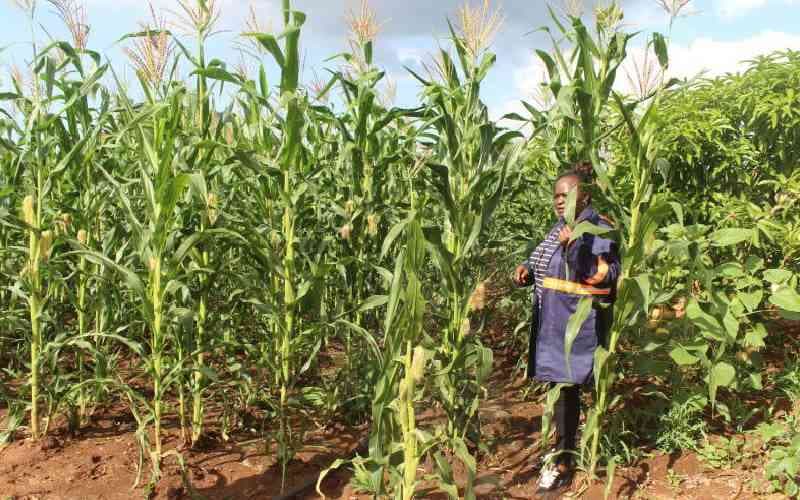We're loading the full news article for you. This includes the article content, images, author information, and related articles.
A sharp 18.2% rise in agricultural borrowing in two years signals deepening investment and response to government credit initiatives, but raises critical questions about debt sustainability and the real impact on small-scale farmers across Kenya.

Lending to Kenya's agricultural sector surged by 18.2% to a record KSh167.7 billion in the two years to September 2025, up from KSh141.9 billion in September 2023. The data, confirmed in the Central Bank of Kenya's (CBK) recent sector surveys, highlights a significant deepening of credit uptake in the nation's economic backbone, driven by a combination of government policy, shifting lending attitudes, and persistent operational pressures on farmers.
This growth in agricultural credit is occurring within a broader economic context of rebounding private sector lending, which reached an all-time high of KSh3.96 trillion in September 2025. The expansion follows a period of monetary easing by the CBK, which has seen its benchmark lending rate cut multiple times to stimulate the economy. However, the accelerated borrowing in agriculture warrants a closer look at the forces behind it and the potential risks involved.
A primary driver for the increased borrowing is the sustained high cost of farm inputs. According to the CBK's September 2025 Agriculture Sector Survey, over 80% of farmers who sought loans did so to purchase essential inputs like fertilizer, seeds, and pesticides. Covering labour costs was the second most cited reason. This indicates that much of the new debt is being used to finance operational costs rather than purely for capital expansion.
Government initiatives have also played a crucial role. The state's budget for the 2025/26 fiscal year allocated KSh47.6 billion for agricultural transformation, including KSh8.0 billion for the fertilizer subsidy programme. While subsidies ease some financial burdens, farmers often need credit to cover the remaining costs. Furthermore, the government is actively reforming agricultural financing to improve efficiency and support smallholders. In October 2025, the Agriculture Cabinet Secretary announced plans to merge the Agricultural Finance Corporation (AFC) and the Commodities Fund to streamline services and promote long-term, low-interest loans.
The increased investment comes as the agricultural sector shows robust growth, expanding by 6.0% in the first quarter of 2025, buoyed by favourable weather and government support. This performance is critical, as the sector remains a cornerstone of the national economy, contributing significantly to the country's GDP. Optimism about the economic outlook, supported by a stable macroeconomic environment and a rebound in agriculture, has been noted in recent CBK surveys of CEOs and market players.
However, the rising debt levels are not without risk. The issue of non-performing loans (NPLs) remains a significant concern for the financial sector. While specific NPL data for agriculture in September 2025 is not yet public, the state-owned AFC reported an NPL portfolio of KSh1.4 billion, or 15.2% of its loan book, as of January 2025. This is higher than the overall banking sector's NPL ratio, which has also been under pressure. Banks have historically perceived agriculture as a high-risk sector due to its vulnerability to climate shocks, price volatility, and the prevalence of small-scale, informal operations, which often lack traditional collateral.
Interestingly, while overall borrowing has increased, the proportion of farmers taking loans has fluctuated. A CBK survey in September 2025 noted that the share of farmers borrowing fell to 31% from 41% in July, with many turning to SACCOs, which have become a leading source of farm financing. This suggests that while the total volume of credit is growing, access may be concentrating among certain types of borrowers, potentially larger-scale farmers with the capacity to absorb bigger loans.
The ballooning credit to agriculture presents a dual narrative. On one hand, it reflects increased confidence from lenders and a strong policy push to modernize a sector vital for Kenya's food security and employment. The availability of capital is essential for boosting productivity, adopting new technologies, and enhancing resilience against climate change.
On the other hand, it raises concerns about the potential for over-indebtedness, particularly among smallholder farmers who are most vulnerable to crop failure and market fluctuations. For the growth to be sustainable, increased access to credit must be accompanied by comprehensive support, including financial literacy training, crop insurance, and guaranteed access to markets.
As the government moves to consolidate its agricultural finance institutions and create a more supportive lending environment, the key challenge will be ensuring that this credit translates into tangible, equitable growth across the sector, rather than becoming a future debt burden. Further investigation into the breakdown of these loans between smallholders and large agribusinesses is required to fully assess the long-term impact on the Kenyan economy.
Keep the conversation in one place—threads here stay linked to the story and in the forums.
Other hot threads
E-sports and Gaming Community in Kenya
Active 7 months ago
Popular Recreational Activities Across Counties
Active 7 months ago
The Role of Technology in Modern Agriculture (AgriTech)
Active 7 months ago
Investing in Youth Sports Development Programs
Active 7 months ago